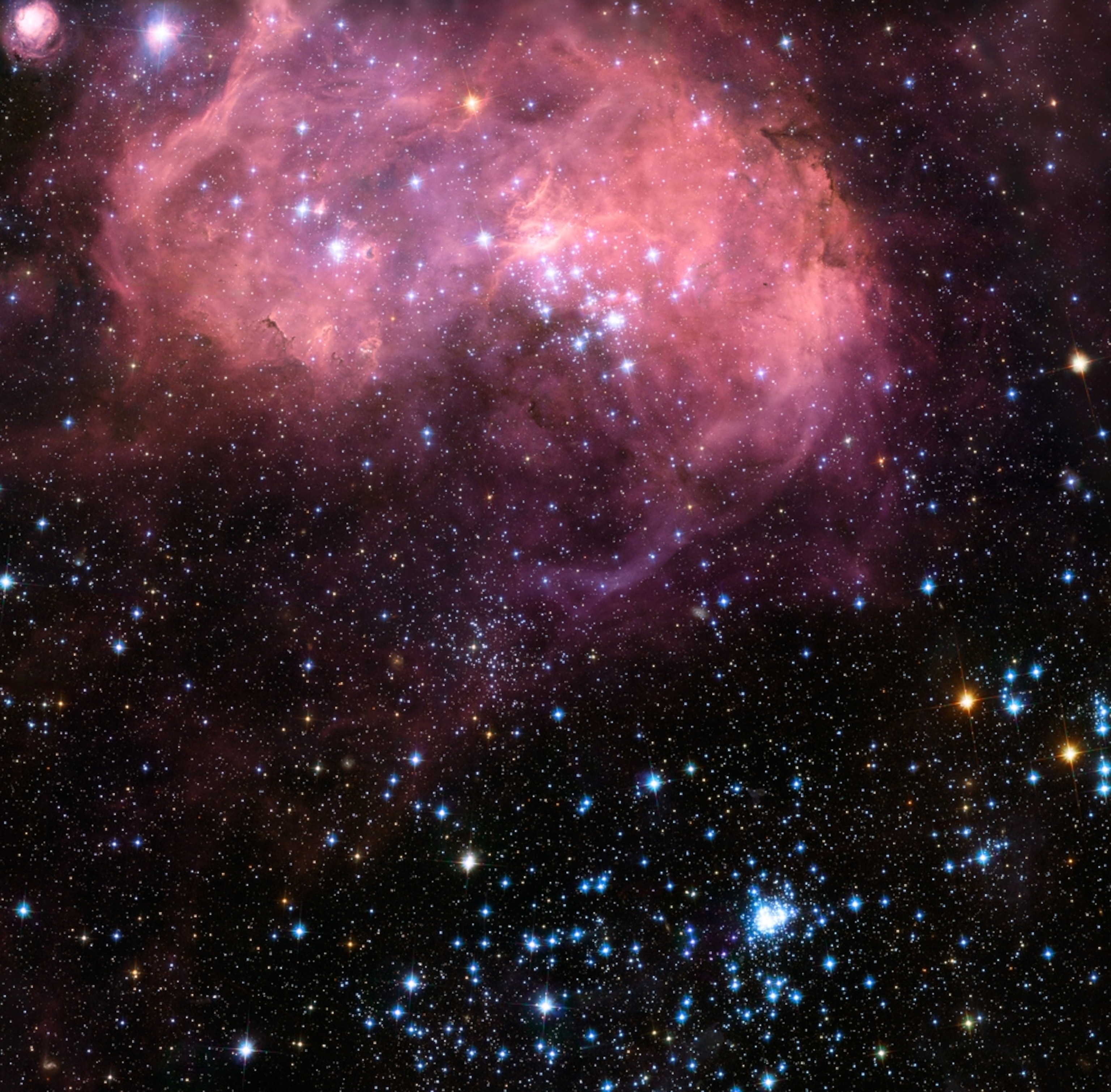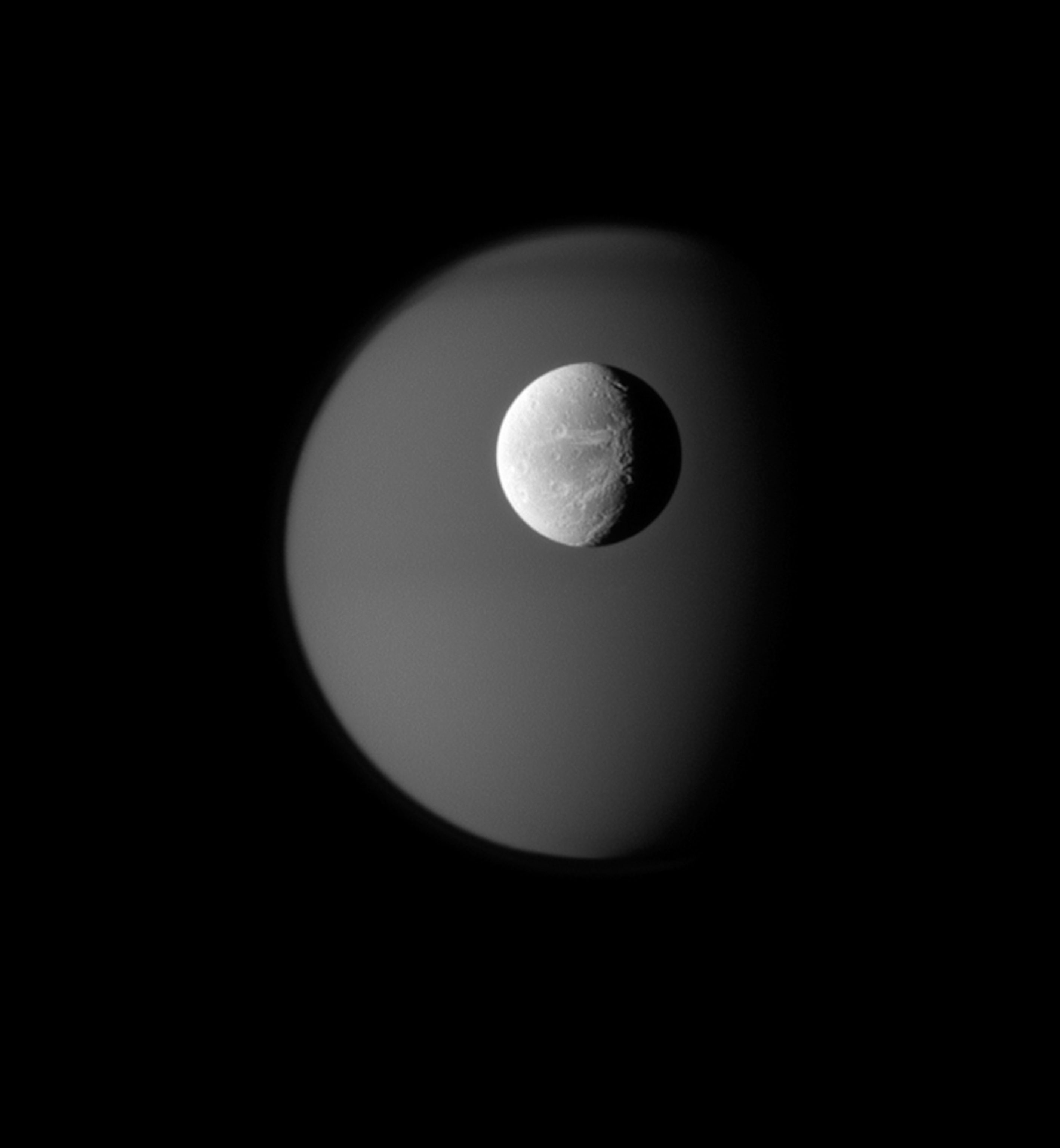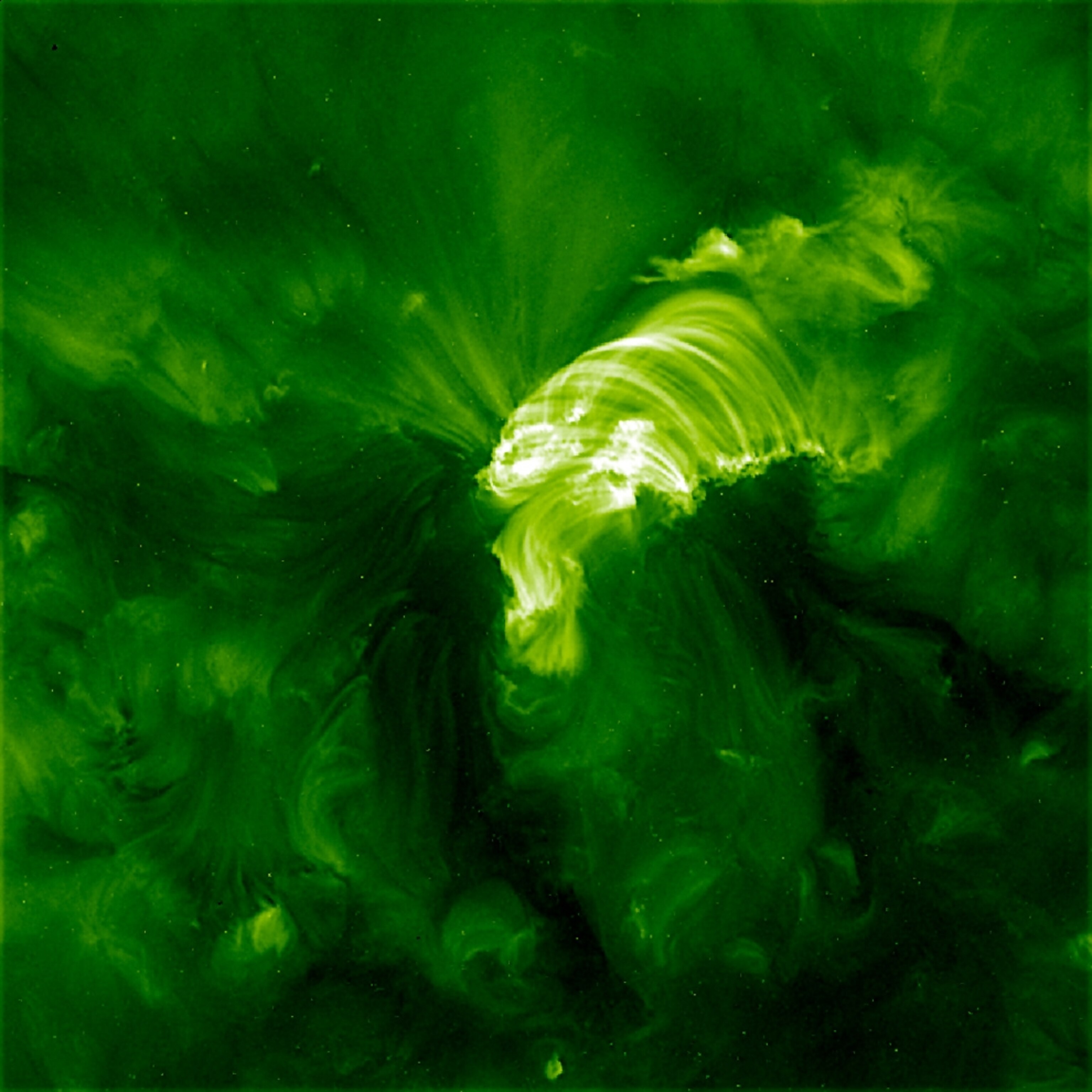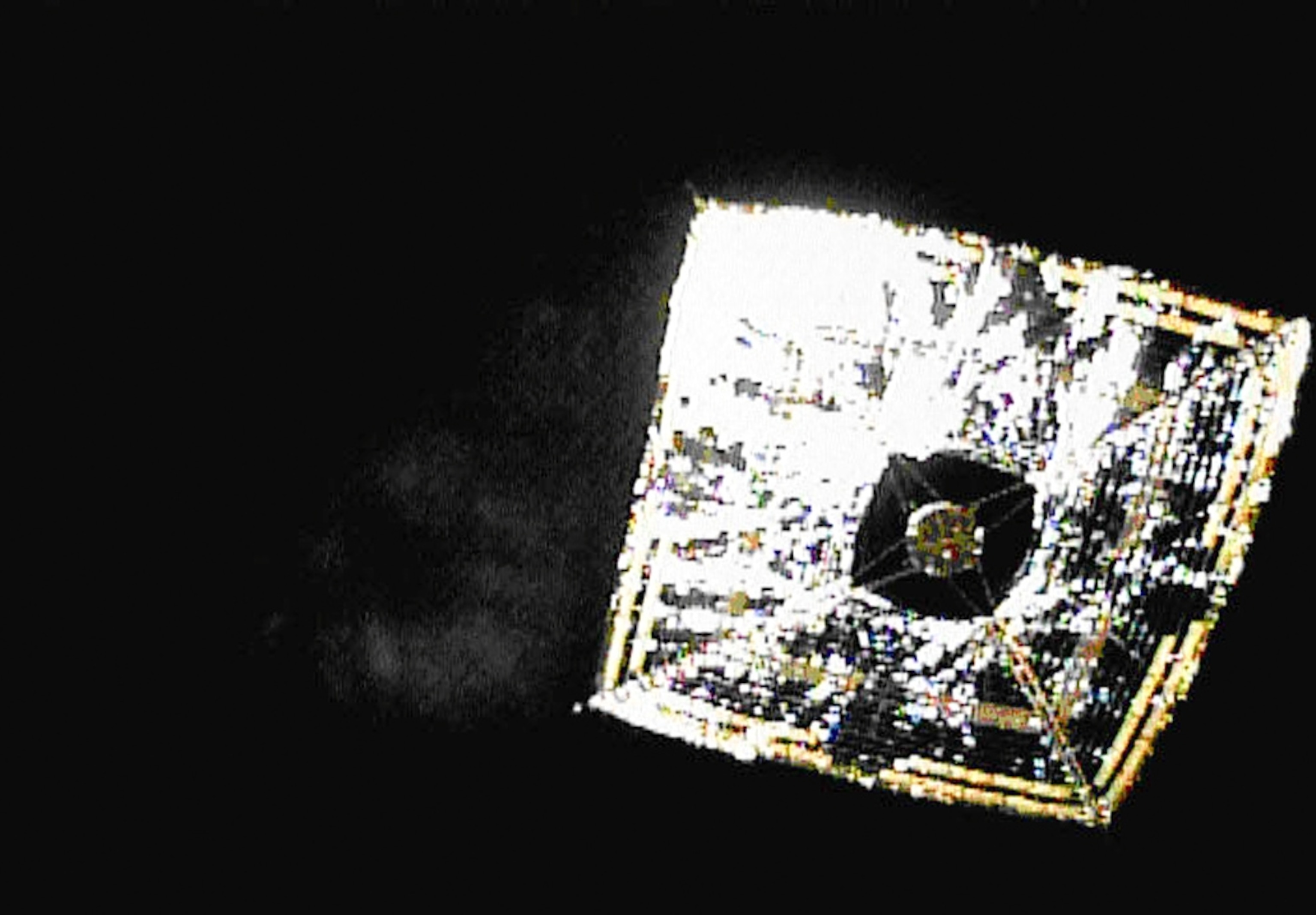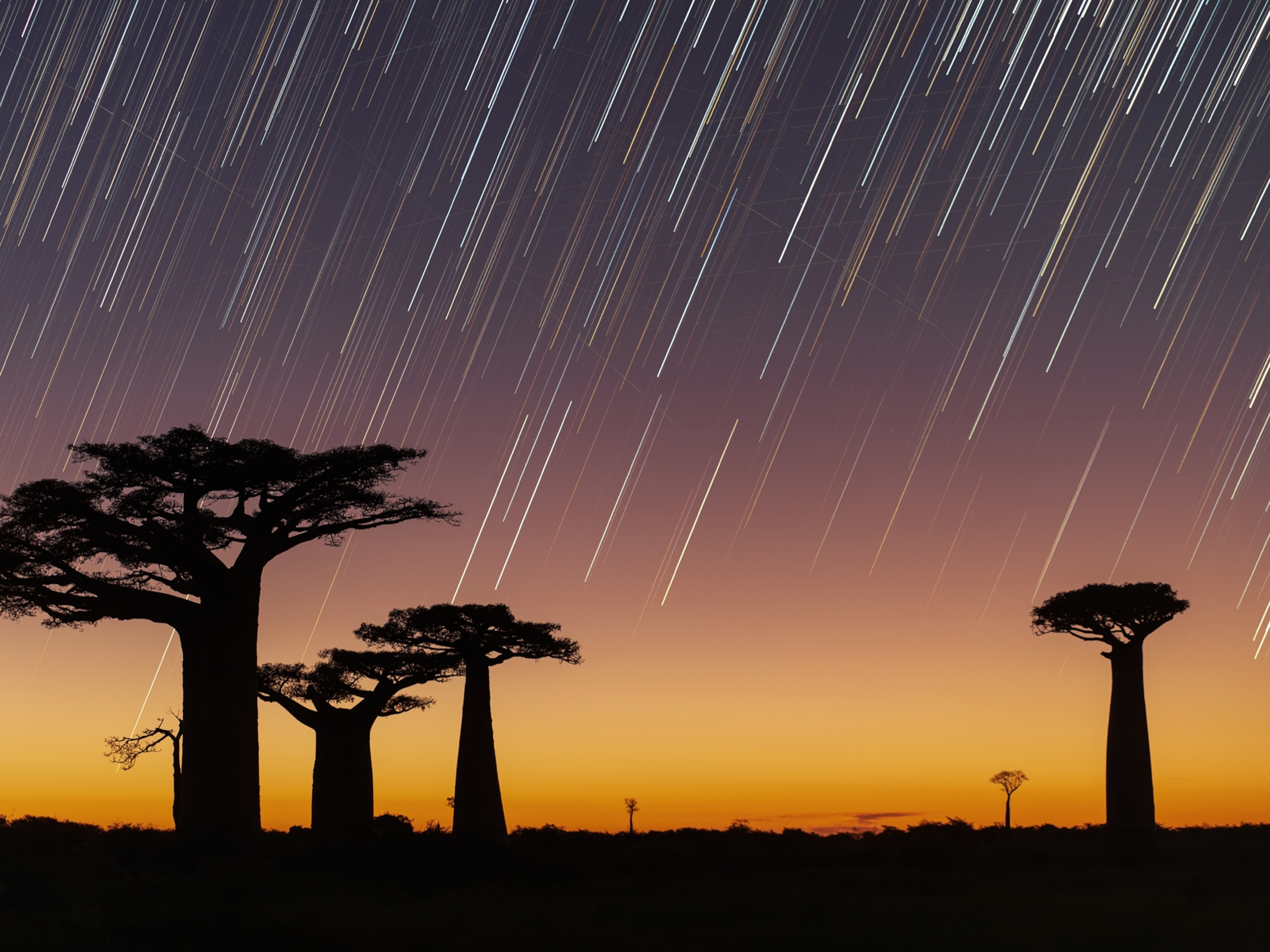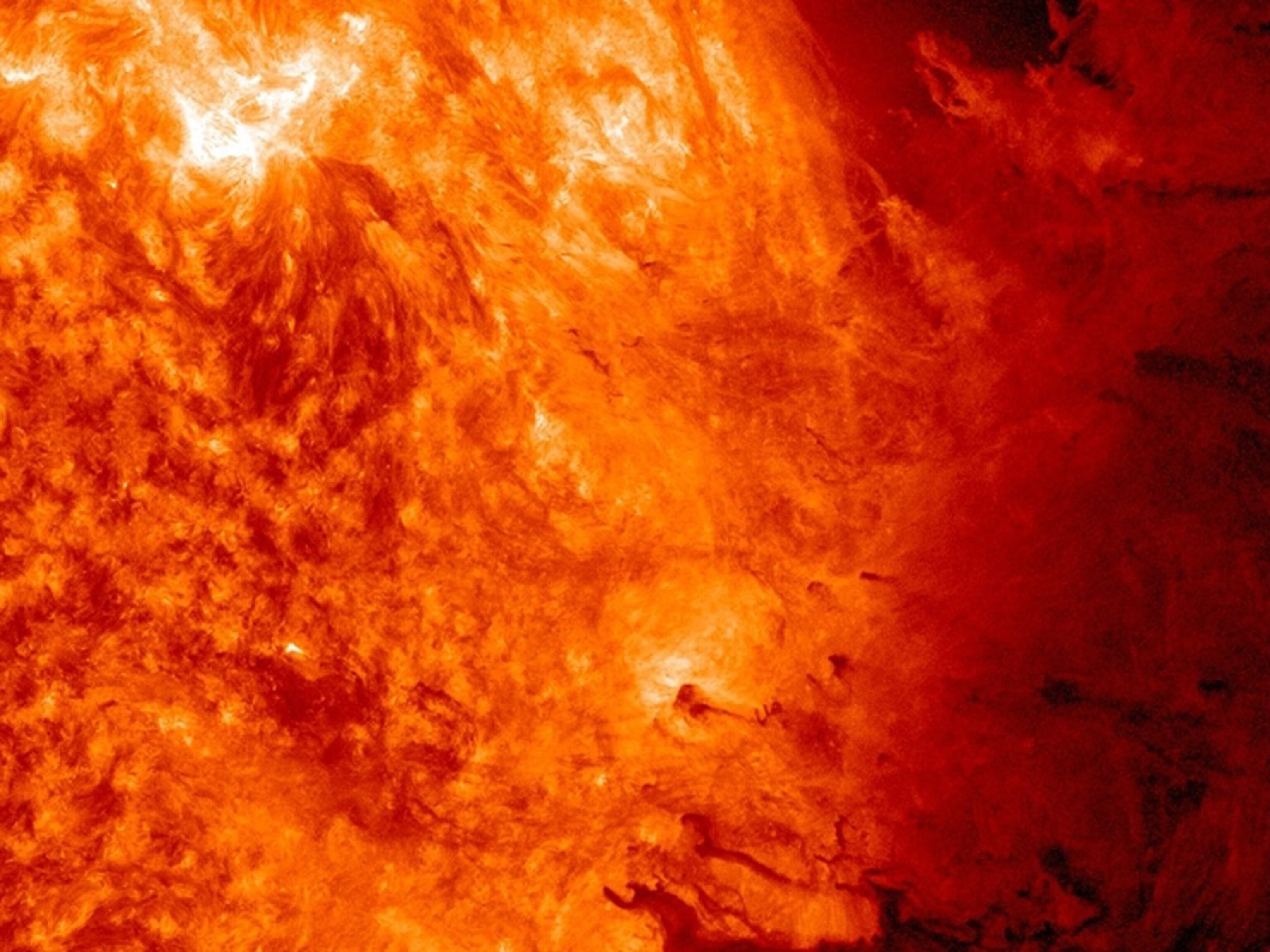Photograph courtesy NASA and NASA Earth Observatory
Space Photos This Week: Odd Aurora, Solar Flare, More
Astronauts see a shifted aurora, two Saturn moons align, the sun sends up a bright eruption, and more in the week's best space pictures.
June 24, 2010

